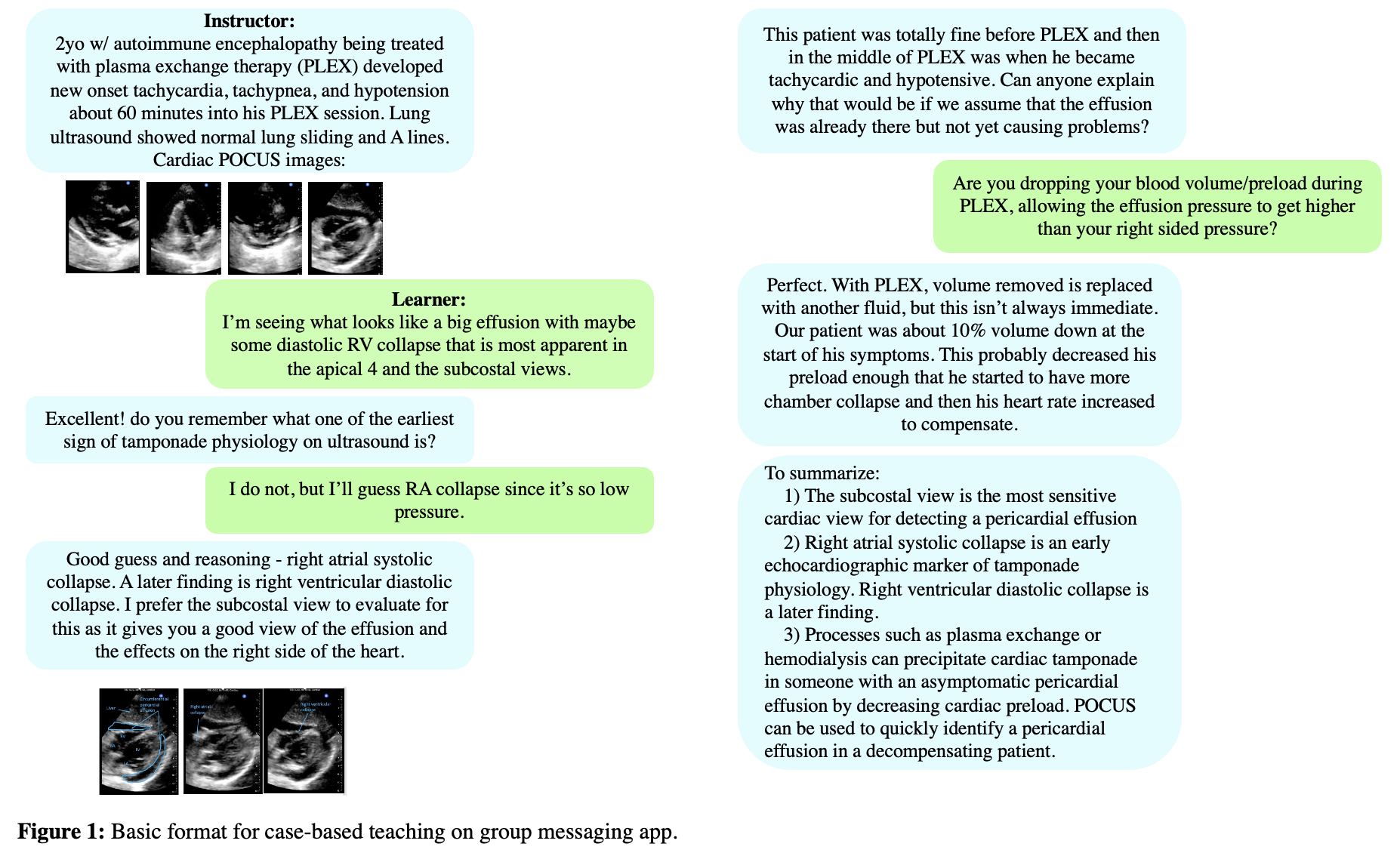Background: Mounting evidence demonstrates the benefits of point-of-care ultrasound (POCUS) for patient care and the development of this important skill for trainees. Residency programs are implementing various strategies to teach POCUS. However, a common barrier to a safe and robust POCUS curriculum is the limited number of POCUS-competent faculty able to provide support and supervision in daily patient care.
Purpose: We describe a novel strategy to enhance traditional POCUS education by way of a group-messaging application (WhatsApp) that supports the integration of resident POCUS skills and knowledge into patient care and report on data from our first two years.
Description: A longitudinal POCUS curriculum was established for internal medicine and medicine-pediatrics residents in 2020. These sessions focus on mastering acquisition of POCUS images and interpreting abnormal images. The challenge with integration into clinical care is the few but growing number of POCUS competent faculty on teaching services. Our solution was to employ a group messaging application (WhatsApp) to leverage the expertise and availability of these few faculty. This app is used for two purposes; first to provide a platform to share HIPAA compliant POCUS images and videos for real-time feedback from ultrasound experts and second as a venue for POCUS instructors to teach learners by guiding them through clinical cases to reinforce teaching points.For the academic years 2020-2022, the number of participants grew from 18 to 185 individuals representing the departments of internal medicine, pediatrics, emergency medicine, anesthesiology, surgery, and family medicine. A total of 250 ultrasound images and 91 clinical scenarios were shared amongst participants. POCUS cases included abdominal, cardiac, lung, musculoskeletal, vascular, and renal/genitourinary pathology. Group members routinely collaborate within the group through case-based learning models. Instructors introduce clinical scenarios supported by ultrasound images. Learners are prompted to interpret ultrasound images as instructors provide feedback and summarize important teaching points (Figure 1). Importantly, as the group evolved, one trainee described it as a learning environment that equalized all as learners while encouraging peer teaching.
Conclusions: We developed a novel approach to POCUS education through the use of a group-messaging app, which created an environment for continuous and real-time support as learners applied their knowledge to clinical practice. This innovative approach to POCUS education creates autonomy, encourages collaboration, and reinforces the use of POCUS in patient-centered care. We believe this unique community positively impacts patient care and resident education. We plan to survey participants to obtain additional qualitative and quantitative data in hopes of demonstrating the positive effects and reproducibility of this ultrasound community.

